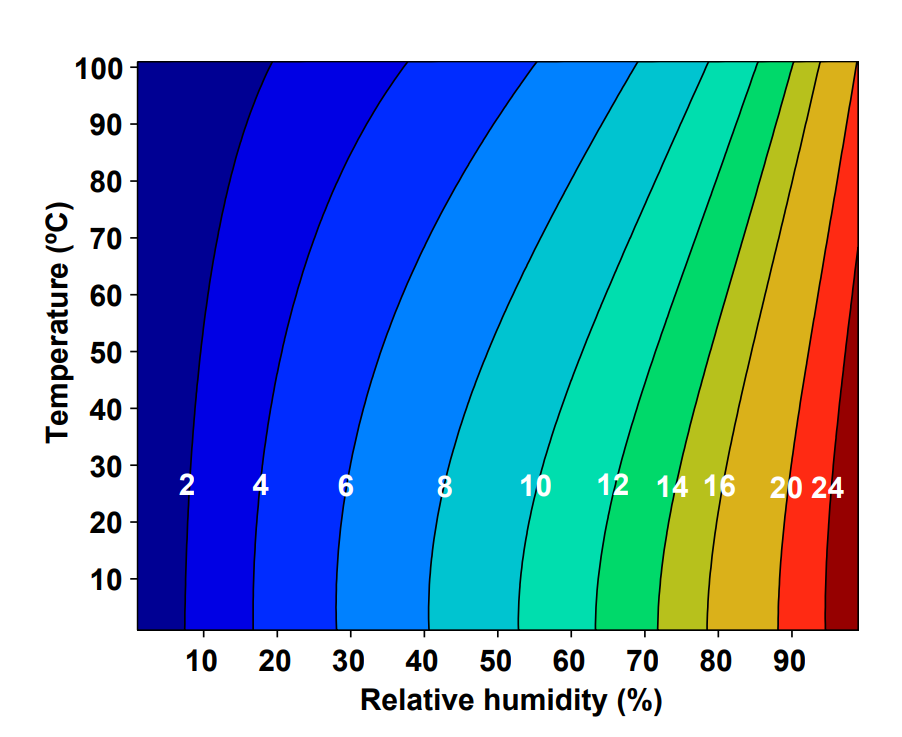As the seasons change, you may notice your hardwood flooring changing with them. And during the winter months, it’s not uncommon for gaps to appear between wooden floorboards.
Why Hardwood Floors Separate in the Winter
As the temperatures drop during the winter season, you’re heating bills tend to rise. The dry hot air produced by most indoor heating causes the humidity to drop within your house; and humidity is a significant factor in what causes hardwood floors to expand or contract.
How Do Low Humidity Levels Affect Hardwood Flooring?
For the most part, wood flooring experiences the least expansion and contraction when exposed to humidity levels ranging from 30% – 50% at around room temperature. This coincides with the wood’s Equilibrium Moisture Content (EMC).
EMC is defined as that moisture content at which the wood is neither gaining nor losing moisture.

Equilibrium moisture content of wood (labeled contours) as a function of relative humidity and temperature.
– Forest Products Laboratory – United States Department of Agriculture
Don’t Overthink It
- Lower humidity increases potential for wood to contract
- Higher humidity increases potential for wood to expand
Basically, the lower humidity levels within your house during the winter cause your hardwood floors to contract which is why the gapping occurs.
Hardwood Floor Contraction is Normal
There’s most likely no need to panic if you’re noticing some gapping within your hardwood floors during the winter months. It’s a natural occurrence which is taken into account when your hardwood flooring is professionally installed.
Preventative Measures
Taking a proactive approach when having your hardwood flooring installed can help minimize the chance for your floorboards to separate in colder temperatures.
During Installation
We recommend having the wooden floor planks nailed and glued down during the installation process. This helps to ensure on overall tighter installation which is more resistant to contraction.
After Installation
Wanting to keep your home at a comfortable temperature during the winter months is understandable. However, there are ways to do this without overexposing your hardwood flooring to the low humidity levels caused by the dry hot hair your heating system produces. The following tips will help prevent major gapping within your hardwood floors while cutting down your heating expenses.
Be Conscious of Your Thermostat Settings
If you don’t have a Smart Thermostat that automatically accounts for outside factors, it’s a good idea to manually drop your thermostat several degrees when leaving your house. You might be slightly chilly for a few minutes when arriving back home, but your hardwood flooring and bank account will thank you.
Keep your windows and doors tightly shut
Heat can escape your house from the smallest crack. Making sure that all of your windows and doors are tightly shut helps prevent heat loss putting less strain on your heating system and minimizing floor separation (especially on flooring closest to radiators).
Install a Humidifier
Installing a heating system equipped with a whole house humidifier or placing a portable humidifier in a potential problem area can help hardwood flooring to maintain its EMC and prevent gapping.

The experts at E_M Custom Flooring & Installations are happy to work with you to ensure your hardwood flooring stands the test of time year in and year out. Contact us today or stop by our showroom and we’ll get you started.

